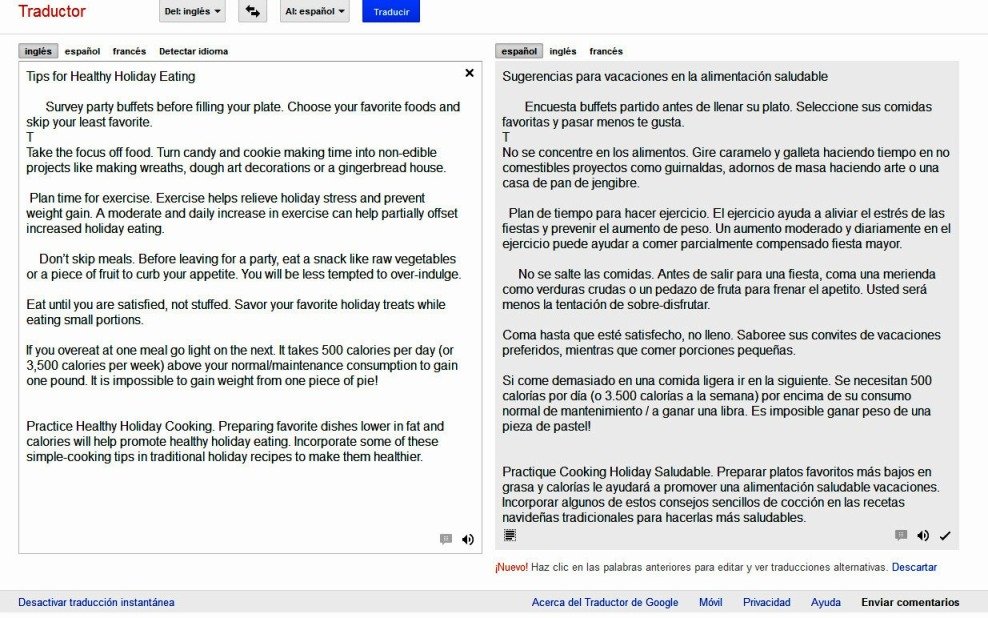Is it really worth to invest in a professional Spanish translation? Wouldn’t it just be the same to ask your Mexican, Puerto Rican or Spanish friend to translate that document for you? As it has already been discussed in other posts, even though your friend may be perfectly fluent in his mother tongue, that does not make him naturally a translator. Let’s explore the reasons why investing in a professional Spanish translation is the way to go.

image courtesy of FreeDigitalPhotos.net
1. Communication
Whether you are trying to reach out to your Latino employees, your US Hispanic customers or the readers of a publication in Spain, communication is the key to build a good relationship and to make a good first impression. Your target audience will find it easier to trust in you and rely on you if you run the extra mile and communicate in their mother tongue and, needless to say, you will dramatically reduce the chances of misunderstandings.
2. Worldwide Spanish Language is Increasing
With 329 million native speakers, Spanish ranks as the world’s No.2 language in terms of how many people speak it as their first language. It is spoken in 44 countries, making it the fourth mostly geographically widely spoken language behind English, French and Arabic. It is also the fourth language spoken in the Internet.
3. Are you a Company with US Hispanic Employees?
If you are, then you should be well aware of the advantages of communicating in Spanish with your Hispanic employees. To begin with, it is a means of acknowledging their presence within your company and of letting them know that you care about them and respect the fact that their mother tongue is different from yours. Besides, it allows you to ensure that any important memo or piece of information is immediately understandable to them.
Needless to say, this is especially important when you are dealing with safety information or training courses in which your employees’ and your company’s safety is at stake.
Last but not least, communicating efficiently in Spanish with your Latino employees may allow you to establish stronger bonds, thus increasing their commitment to the company.
4. 52 Million Hispanics in the US
The United States has the largest Spanish-speaking community outside of Mexico. According to the last US census, the Hispanic population in the US is estimated at 52 million, which makes it the largest ethnic or race minority. Hispanics constitute 16.7% of the nation’s total population. This impressive presence has its undeniable effect in the languages spoken in the US. Spanish is the second most used language in the country and it has more speakers than Chinese, German, Italian, French, Hawaiian and Native American languages combined. It is thought that 37 million people speak Spanish as their first or second language and that there are six million Spanish language students.
5. Global Presence
Translating to Spanish, as well as to other languages, is crucial in current times in which globalization leads business organizations to operate worldwide. In fact, speaking your target audience’s language is an efficient way of successfully reaching prospect customers and making your products and services available to them.
6. Spanish-Speaking Internet Users
According to Internet World Stats, there were 182,379,200 Spanish-Speaking Internet users by December 2011. With this being said, if you have a corporate website, there are great chances that a Spanish web surfer will eventually stumble upon it. If your content is not professionally translated into Spanish, you may lose a valuable potential customer. Marketing experts agree on the fact that Hispanics in the US generally spend on average more time online than their Caucasian or Chinese fellows and that they are more likely to shop online. Thus, having your website translated into Spanish can definitely have a strong impact in your market share.
7. A Professional Translator Makes the Difference
If you are thinking of using a machine translation tool, think it twice. These tools -many of which can be found and used for free online- translate word by word, which makes it impossible to achieve the global meaning of a phrase or idea. That is to say, they translate the literal meaning of a word into another language, but fail to convey the subtleness and richness of a language, thus making the translated text sound unnatural, forced and rough. Languages are living creatures and only a professional translator is able to find the right words to convey the precise meaning the original author intended, making sure the whole idea is clear, understandable and precise.
8. Translations can be Affordable
Not always translations are as expensive as you may think. Some translation agencies are able to offer inexpensive rates and even translation discounts. Besides, there are always ways of lowering your translation costs.
9. Are you a Non-Profit Organization?
If you are a Nonprofit organization working for Hispanics or with Hispanics, translating your content to Spanish is of vital importance. It is the only way you can rest assured that your message will be conveyed clearly and efficiently to your target audience.
10. Are You A Health Care Provider in the US?
With an increasing Spanish-speaking population in the US, health care providers need to ensure that their hospital forms, pamphlets and documents are in Spanish. Being ill or having an ill relative in hospital is stressing, and having doctors or nurses speaking in a language patients do not master well or having to read documents in a language they are not well acquainted with only adds stress to the situation. If, as a health care provider, you make sure your staff offer translated versions of the diagnosis or treatments to Spanish-speaking patients, you are definitely helping them to cope better with their health condition.
Request your Free Translation Quote today!
 Photo: Exequiela Goldini
Photo: Exequiela Goldini










